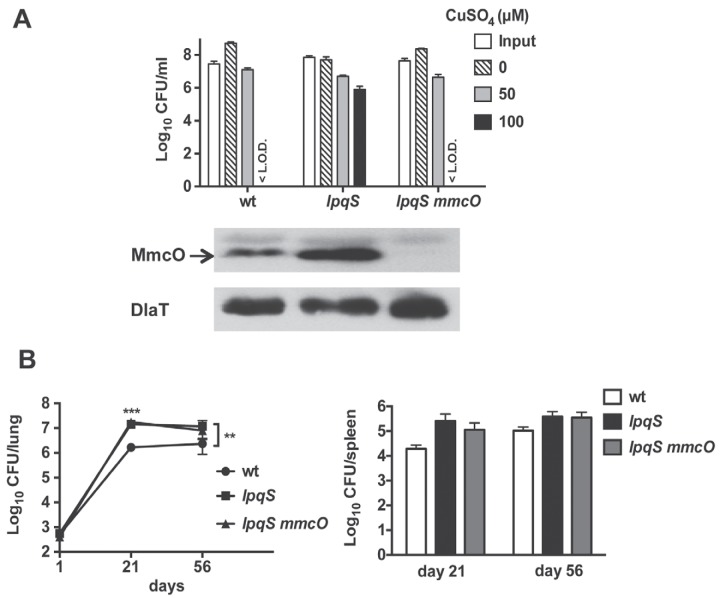FIG 4 .
Overexpression of mmcO resulted in high Cu resistance. (A) Deletion of mmcO from the lpqS mutant resulted in WT Cu resistance. A Cu sensitivity assay (top) was performed with the WT strain and the lpqS and lpqS mmcO mutant strains. Data are representative of two experiments each done in triplicate. <L.O.D., below the limit of detection (which was 100 CFU). Immunoblot analysis (bottom) shows that disruption of mmcO in the lpqS mmcO strain eliminates MmcO protein from this strain. Data are representative of three biological replicates. (B) Deletion of mmcO from the lpqS mutant did not alleviate the hypervirulence phenotype. The CFU counts in the lungs and spleens of C57BL/6 mice infected with the WT, lpqS, and lpqS mmcO strains are plotted. The initial dose of infection was ~500 CFU/mouse. Measurements were made on days 1 (n = 3), 21 (n = 4), and 56 (n = 4). Two-way analysis of variance and a Bonferroni posttest showed that at day 21, both the lpqS and lpqS mmcO mutant strains were statistically significantly different from the WT strain (***, P < 0.001) and that at day 56, the lpqS mutant strain was statistically significantly different from the WT strain (**, P < 0.01). The data represent the mean ± standard deviation of a typical experiment that was done twice.

